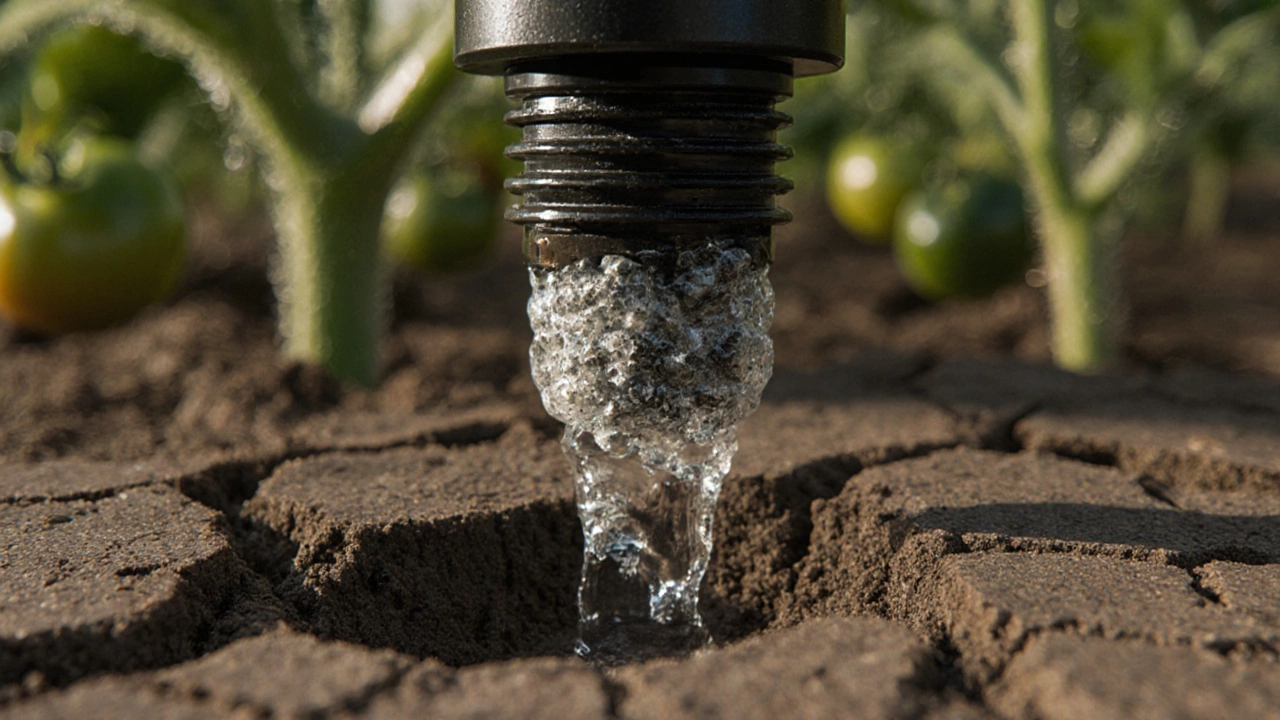Drip emitters are efficient but prone to clogging, uneven flow, and damage. Learn the common problems and how to fix or prevent them to keep your garden healthy and water-efficient.
Emitter Flow Rate: What It Means and How It Affects Your Garden Irrigation
When you hear emitter flow rate, the amount of water a drip irrigation emitter releases per hour. It's not just a number on a box—it’s the difference between healthy plants and wasted water. In Indian gardens, where water is precious and summers are harsh, getting this right means your tomatoes, herbs, and flowering shrubs actually thrive instead of just surviving.
Drip irrigation, a system that delivers water slowly and directly to plant roots. It's the most efficient way to water in hot, dry climates like India's. But if your emitter flow rate is too high, you’re flooding the soil and drowning roots. Too low, and your plants are thirsty, especially during peak heat. Most home gardeners use emitters between 0.5 and 2 gallons per hour. For container plants on balconies, 0.5 to 1 GPH works best. For rows of vegetables or fruit trees, 1 to 2 GPH gives steady moisture without runoff.
Irrigation efficiency, how well water reaches plants without waste. It’s not just about how much you use—it’s about how smartly you use it. A 1 GPH emitter running for 30 minutes gives you half a gallon—perfect for a single potted basil plant. But if you connect ten of those to the same line without checking pressure and spacing, some get too much, others get nothing. That’s why layout matters. Emitters need to match plant needs, soil type, and sun exposure. Clay soil holds water longer, so you need lower flow rates and longer run times. Sandy soil drains fast—higher flow, shorter bursts.
Many Indian gardeners skip this step and just buy the cheapest drip kit they find. But flow rate isn’t one-size-fits-all. A jasmine vine on your terrace needs different water than a row of brinjal in your backyard. Even two pots of the same plant can need different settings if one gets full sun and the other is shaded. Your water conservation, the practice of using water wisely to reduce waste. It’s not just eco-friendly—it saves money on your water bill and keeps your plants alive during power cuts or supply cuts.
Look at the posts below. You’ll find real examples of how people in India tweaked their watering systems—switching from sprinklers to drip lines, fixing clogged emitters, choosing the right flow rate for balcony herbs, and even reusing old bottles as slow-drip emitters. No fancy tools needed. Just observation, a little trial and error, and understanding what that tiny number—emitter flow rate—really controls.
